Staff Feature | Yago Clavo Roman

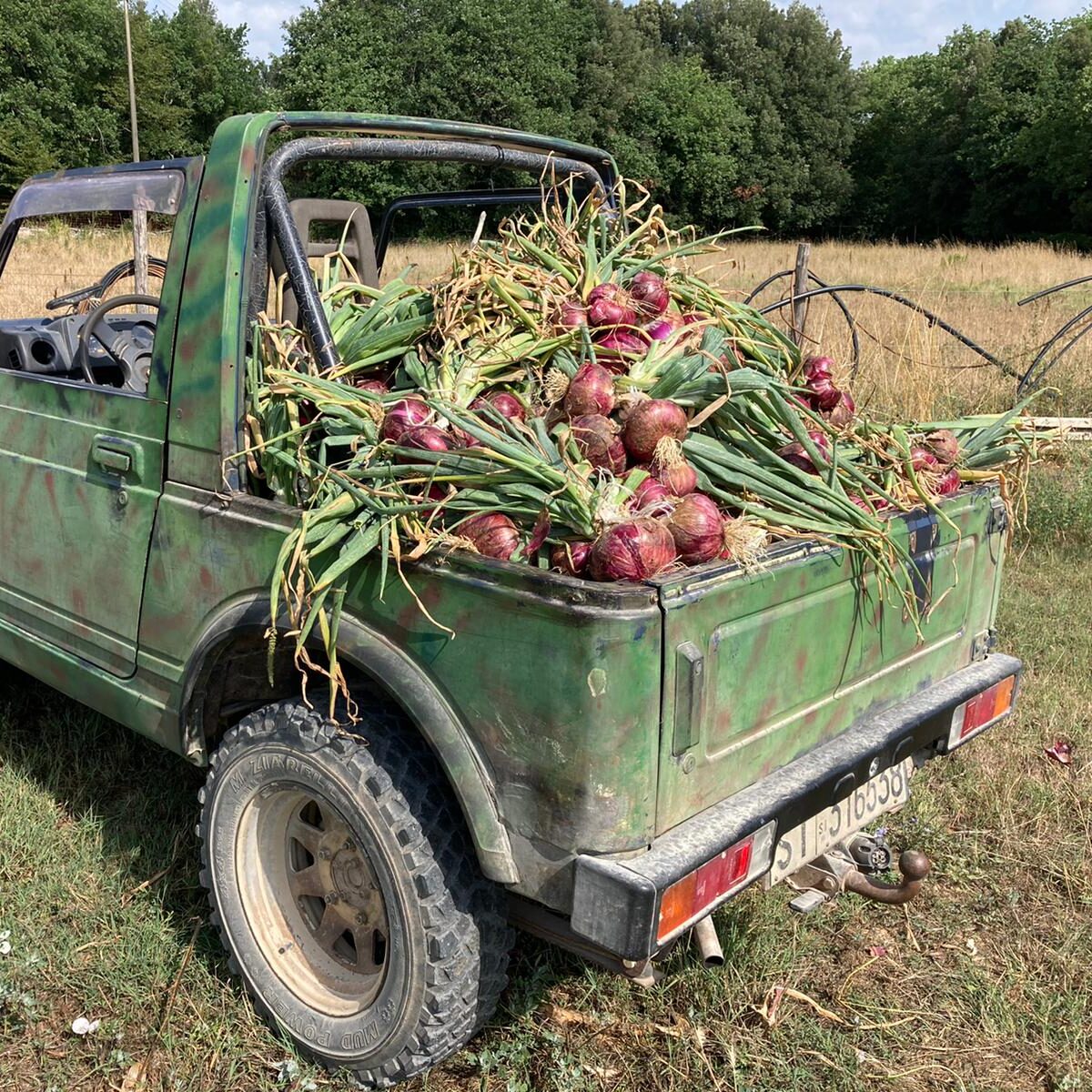
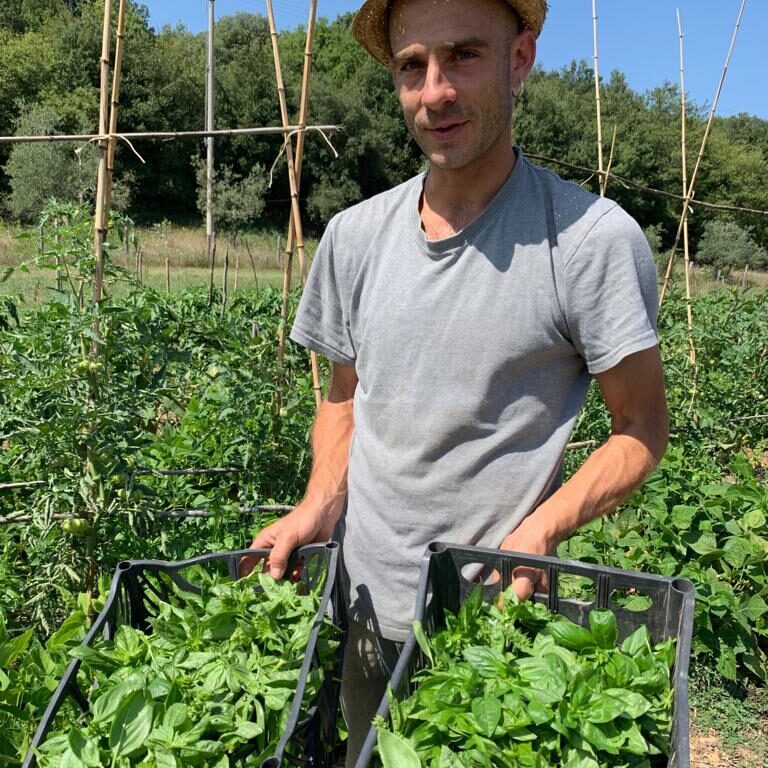
Photos, from top to bottom: Jorge as a butcher apprentice in 2012; Jorge enjoying a pizza night at home now; Jorge with his family.
Where are you from originally? How long have you lived around Spannocchia?
I am from the northwest coast of Spain, the “Galicia” region. It is known for the “Camino de Santiago” and really good food. I lived at Spannocchia for about six years, and then two years ago my family’s needs changed and we decided to move to Rosia (the closest town). It was an amazing experience to live in the forest at Spannocchia—if you have the opportunity, you should definitely do it!
How long have you worked at Spannocchia?
I have worked at Spannocchia since 2016, though before that I did some occasional collaboration with the staff here.
What is your favorite thing about working at Spannocchia?
One of the things that I appreciate the most is the opportunity to show a lot of people a different way to approach agriculture. Agriculture that doesn’t consume large amounts of resources, but is still able to be productive. Agriculture that does not have a negative impact on the air, water, or soil. Agriculture that produces high-quality and high-density nutritional food while also improving the ecosystem, like sinking carbon, creating fertility, increasing biodiversity, purifying the water, and fighting hydrogeological instability.
What do you do for fun outside of work?
That’s a difficult question, or maybe too easy… my partner always says that I have a lot of hobbies. I enjoy spending time with friends, maybe over a good homemade dinner or lunch, or a concert. I like fishing, hunting mushrooms, and playing soccer. I am also a bit of a geek and love reading or listening to podcasts about regenerative agriculture or microbiology! Last, but definitely not least, I love to spend time with my daughter and my partner. I’m probably forgetting something—for sure two lives wouldn’t be enough to do it all!
Where did you first learn to farm?
I am actually from an industrial city, but I was lucky and in my seventh-floor apartment, I had a terrace where, as a kid, I grew tomatoes, basil, lemons... Even my grandma, when she saw my passion, asked my uncles to build me a structure to help me grow my plants. At that stage, patience was definitely not my strongest quality, and I still remember her getting frustrated with me because after only maybe a month, I was pulling the garlic and lentils, or whatever I was growing, to see how it was going!
But my first experience farming was when I arrived in Tuscany in 2011. My first job was harvesting olives, and it was love at first sight. I continued with dairy cows, designing gardens, and then in 2015 I took a course on permaculture design and several courses on regenerative agriculture, focusing on vegetables, chickens, and olives. I had wonderful teachers; one especially, while they were younger then, is now recognized internationally as one of the more avantgarde farmers in agroecology systems. At that time, I rented land with a friend with the plan to regenerate the soil while producing vegetables, but it was really challenging— costs were high, resources were limited—so even though we knew the theory well and were motivated, the results weren’t great. Luckily Spannocchia knew about our project and Daniela [the Castello Director at Spannocchia] met with me and explained all about Spannocchia, and offered the opportunity to come work. I think I said yes before she was even done speaking! That was in late 2015 and here we are today.
What’s your favorite vegetable to grow? To eat?
I truly like to grow everything more or less equally, but I will say that I like to focus more on the vegetables that didn’t grow very well the year before. If I have to name one, the onions are probably my favorite. Nothing compares to Spannocchia’s cipolle bastarde [a variety that translates to “bastard onions”]!
In terms of eating, when you eat veggies in season, you can’t not love them all, but there is something special about the first zucchini in the early spring. In summer, with the quantity of tomatoes, peppers, garlic, onions, and cucumbers, I love to make Gazpacho. It’s a peasant recipe from southern Spanish farmers and it good for you when it’s really warm outside; it has lots vitamins and minerals and we drink it cold. In the fall, a pasta with radicchio, gorgonzola, and nuts is so good too... it’s too difficult to pick one!
Did the Orto grow any new vegetables or new varieties this year?
We always try to work with local varieties. Fortunately, there is an organic nursery in Siena that has a lot of experience knowing which plants grow best in our area. But it’s important to introduce new varieties at the right moment. We are currently in transition to a fully no-till garden, but that’s 4000 square meters (1 acre), so you can imagine the amount of work. Maybe in one or two years, we can start to experiment with some new produce. “Piano piano” as we say (step-by-step, or “slowly slowly”), to avoid frustration.
What surprised you about the garden this year, or what were the biggest challenges?
It was a positive year in the garden overall. In the spring and summer, we had very good harvests. The fall has been alright, and the winter will be more complicated. This is because we created many no-till beds during the summer, but the temperature was so high (40°C/100+°F) that the soil was not able to incorporate the large amount of organic matter that we introduced. It’s a little too early to tell, we’ll see…
There were other challenges too. We created around 1000sq. m of no-till beds and did some structural work to keep deer out and to host ducks. All the while, we needed to produce enough food for the restaurant. So it was intense. But no pressure, no fun! And these changes reflect both personal and farm goals so, even now as I am tired, I am satisfied.
Can you explain your philosophy about farming and your relationship to farming and the earth?
My philosophy is to work with nature and not against it, to take care of the resources of the next generation and to try to share the limited knowledge that I have been able to accumulate.
What are you looking forward to for future growing seasons?
I am going to try to synthesize this, but it’s not going to be easy. I think that as the system gets more complex, the more productive and resilient it will be. The benefits of all of the elements in connection are superior to their benefits individually.
My permaculture mentor always says, “the problem is the solution.” When he told me this almost ten years ago, I was skeptical, but with a little reinterpretation, I think he could be right! The point is that for many years I’ve tried to apply permaculture principles on the farm. It’s been many years that I’ve thought that, to really be regenerative, the gardens need to produce almost all the resources they need. Because it’s possible to do that, and if I am regenerating my garden with resources from another farm, then am I regenerating my system but degenerating another? If we want to be an example to others, this is something to improve. But how?
For example, the straw that we use to cover soil could come from our own plants, that we could grow around the edges of the garden. And those plants would have large roots that could save nutrients and water, would house fireflies and toads, would act as a barrier to catch nutrients that the wind carries. They would feed the soil bacteria and fungi, increasing biodiversity and organic matter.
It's the same idea if we introduce certain trees—Robinia, Paulownia, or some fruit trees come to mind. First, they would create fertility, not like we can on top of the soil, but deep down several meters, like in the forest. They would fix nitrogen in the soil too. They would offer a shelter for birds, shade for everyone. They would produce seeds to feed our animals, or precious biomass for a protein-rich soil cover. I could go on and on!
We now have a garden with a slug problem. So another thing I would like to introduce are ducks. Even ducks connect with the other elements: the trees and the garden would produce shade and food for them, they would be a source of fertility for the system, and a way to control the slug population. They produce meat and eggs for us and—I’ll say it—maybe also some company.
So the ongoing goal is to increase the complexity and interrelatedness of the entire garden system, which will also diversify production.
If you could teach everyone who visits Spannocchia one thing about farming or the environment, what would it be?
“Conventional agriculture” shows us big fields with one crop for acres and acres. Those crops need fertilizers, fungicides, herbicides, pesticides and copious amounts of fuel. But even with all those inputs, they destroy the soil, produce contaminated food, poison the water, and kill the biodiversity. We want to do the opposite.
My permaculture teacher always says that nature is the teacher, and if you observe it with calm you can see that the forest or abandoned fields don’t lose fertility, but increase it. No one fertilizes the forest, or works the soil with a tractor, and yet the forest and the abandoned field keep accumulating organic matter and evolving.
There is so much depth here about regenerative farming practices and caring for the earth. Thank you for sharing so generously! We’ll end on a lighter note… do you have a funny story or favorite moment from farming at Spannocchia?
With the interns, we often have good time. I remember some years ago, the interns arrived to work dressed like the Spannocchia staff, and it was very fun because I spent the day working with “Randall” [the farm’s beloved boss/owner, who has since passed], “Giulio” [another farmer], and “Pietrina” [the cook]. Their imitations were so, so good. That day we watered the plants with our tears because we laughed so hard! 😉

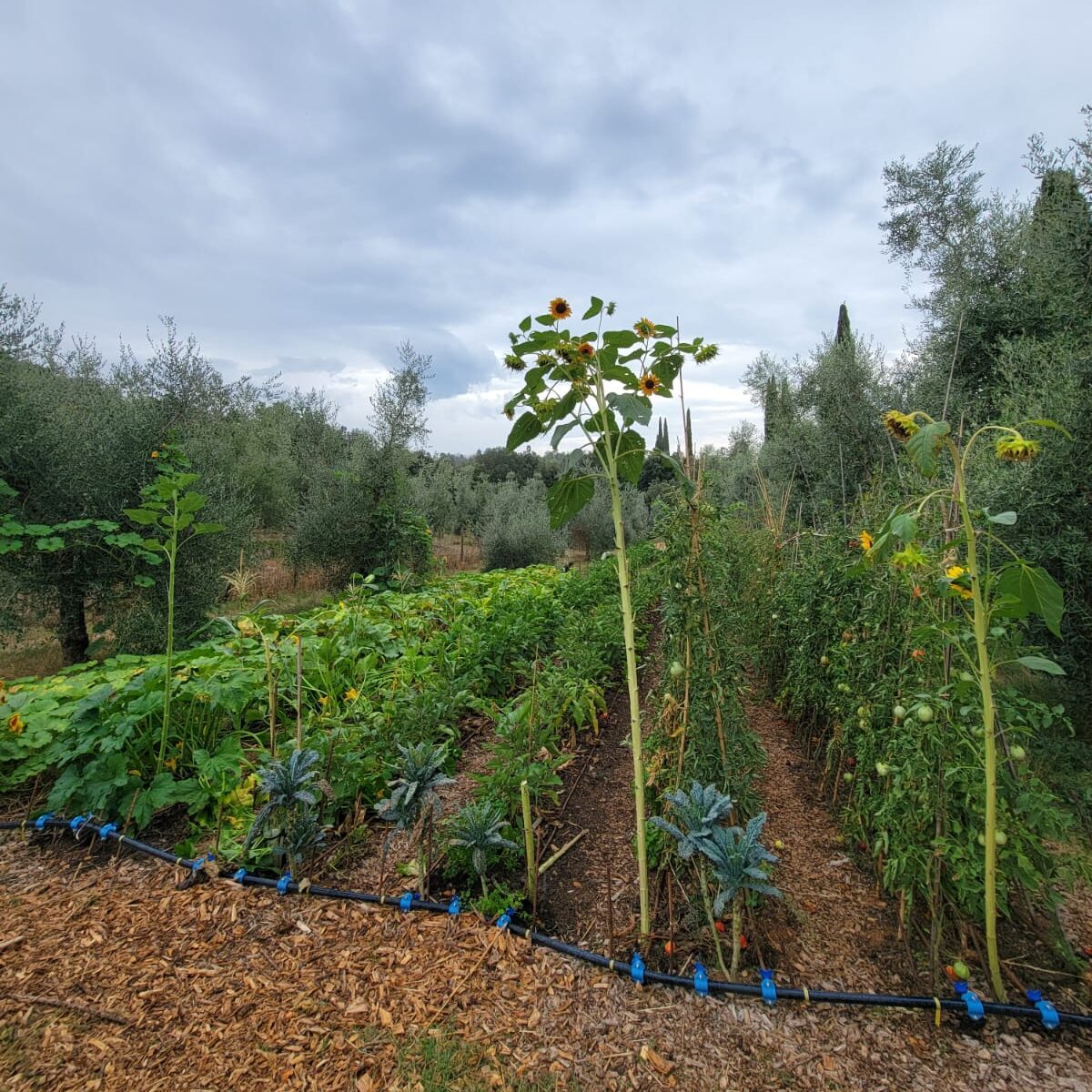
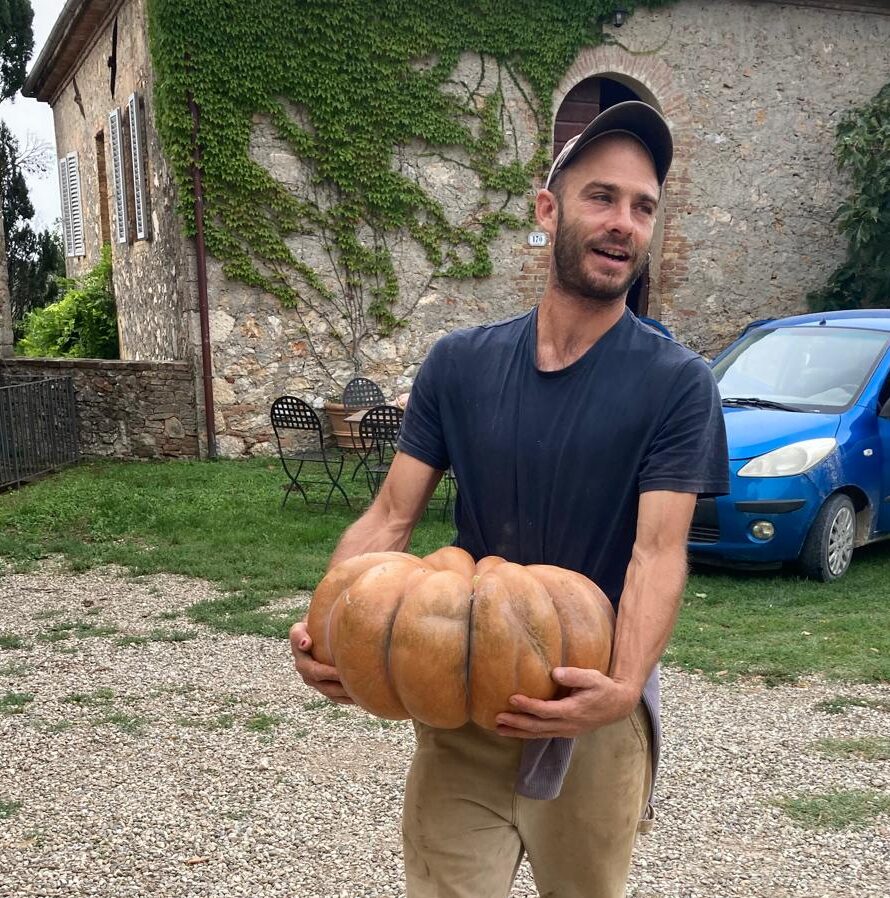
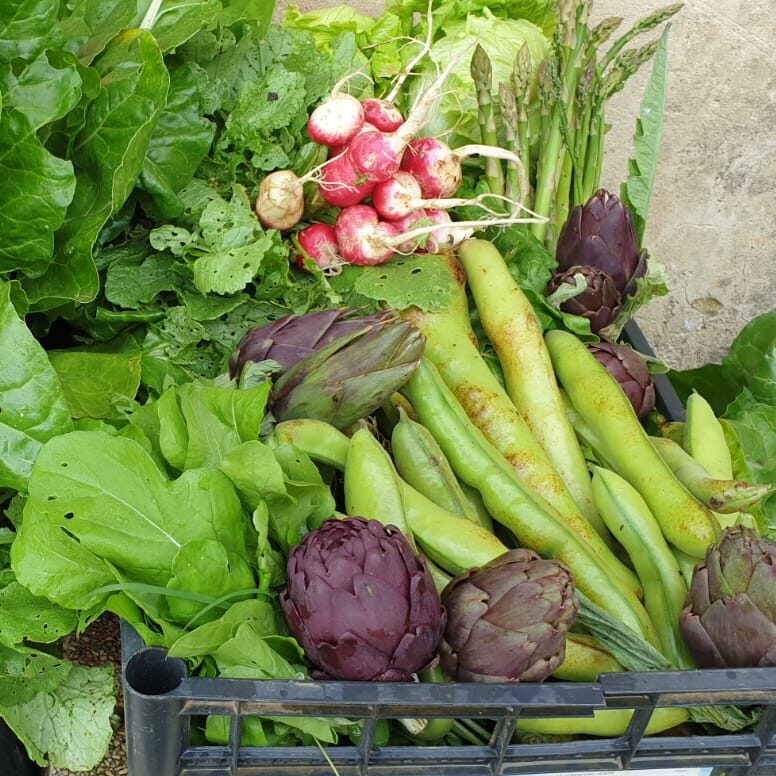


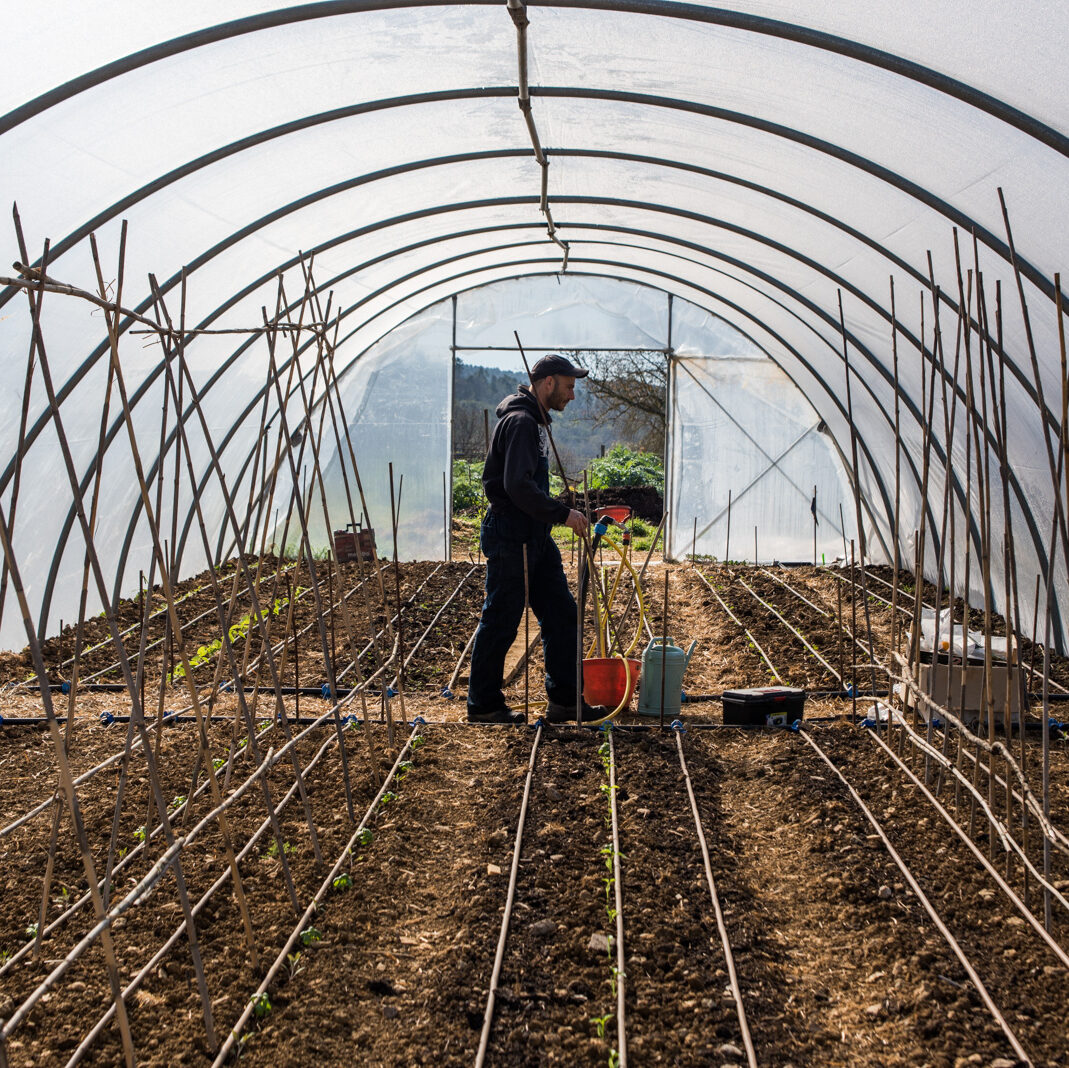
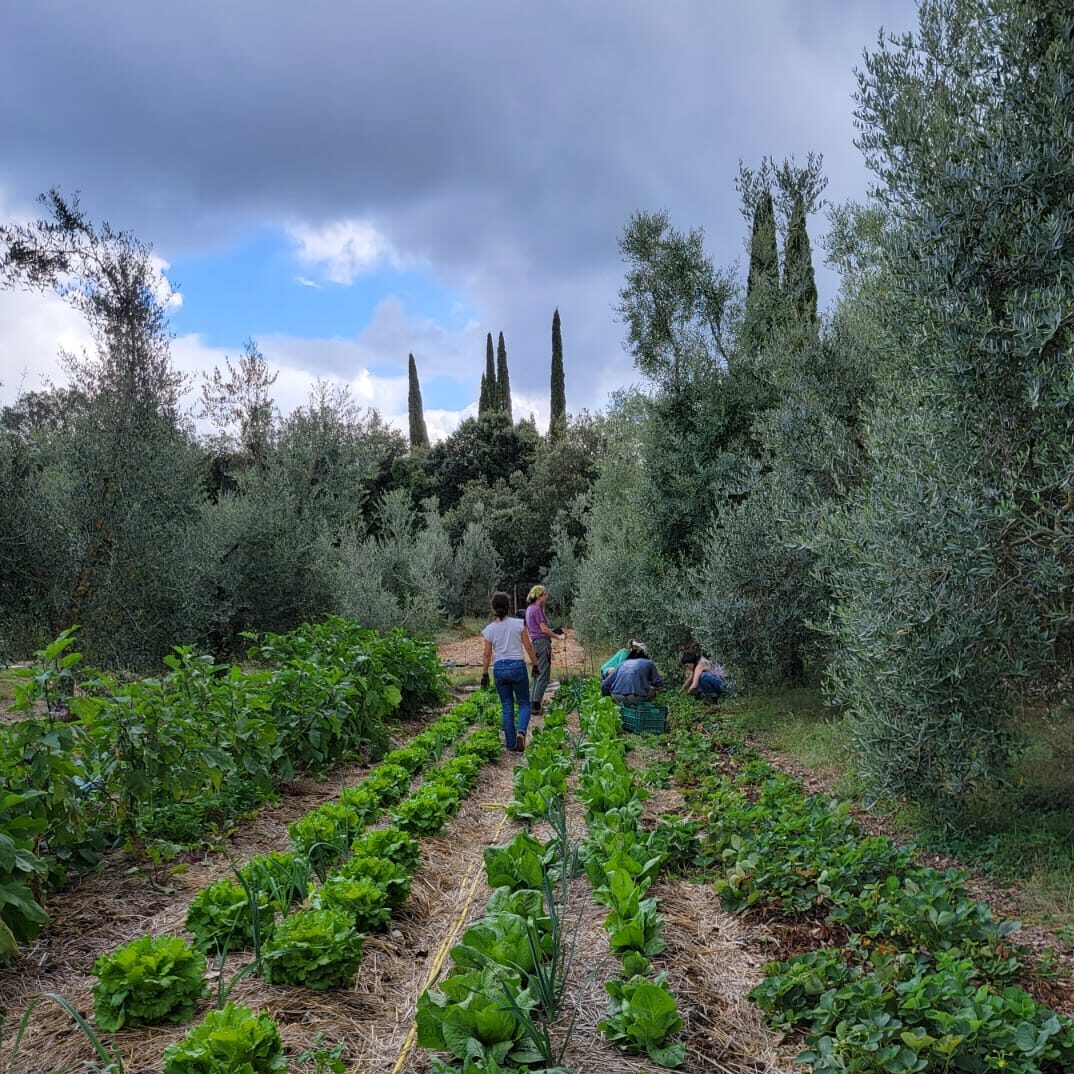


Where are you from originally? How long have you lived around Spannocchia?
I am from the northwest coast of Spain, the “Galicia” region. It is known for the “Camino de Santiago” and really good food. I lived at Spannocchia for about six years, and then two years ago my family’s needs changed and we decided to move to Rosia (the closest town). It was an amazing experience to live in the forest at Spannocchia—if you have the opportunity, you should definitely do it!
How long have you worked at Spannocchia?
I have worked at Spannocchia since 2016, though before that I did some occasional collaboration with the staff here.
What is your favorite thing about working at Spannocchia?
One of the things that I appreciate the most is the opportunity to show a lot of people a different way to approach agriculture. Agriculture that doesn’t consume large amounts of resources, but is still able to be productive. Agriculture that does not have a negative impact on the air, water, or soil. Agriculture that produces high-quality and high-density nutritional food while also improving the ecosystem, like sinking carbon, creating fertility, increasing biodiversity, purifying the water, and fighting hydrogeological instability.


What do you do for fun outside of work?
That’s a difficult question, or maybe too easy… my partner always says that I have a lot of hobbies. I enjoy spending time with friends, maybe over a good homemade dinner or lunch, or a concert. I like fishing, hunting mushrooms, and playing soccer. I am also a bit of a geek and love reading or listening to podcasts about regenerative agriculture or microbiology! Last, but definitely not least, I love to spend time with my daughter and my partner. I’m probably forgetting something—for sure two lives wouldn’t be enough to do it all!
Where did you first learn to farm?
I am actually from an industrial city, but I was lucky and in my seventh-floor apartment, I had a terrace where, as a kid, I grew tomatoes, basil, lemons... Even my grandma, when she saw my passion, asked my uncles to build me a structure to help me grow my plants. At that stage, patience was definitely not my strongest quality, and I still remember her getting frustrated with me because after only maybe a month, I was pulling the garlic and lentils, or whatever I was growing, to see how it was going!
But my first experience farming was when I arrived in Tuscany in 2011. My first job was harvesting olives, and it was love at first sight. I continued with dairy cows, designing gardens, and then in 2015 I took a course on permaculture design and several courses on regenerative agriculture, focusing on vegetables, chickens, and olives. I had wonderful teachers; one especially, while they were younger then, is now recognized internationally as one of the more avantgarde farmers in agroecology systems. At that time, I rented land with a friend with the plan to regenerate the soil while producing vegetables, but it was really challenging— costs were high, resources were limited—so even though we knew the theory well and were motivated, the results weren’t great. Luckily Spannocchia knew about our project and Daniela [the Castello Director at Spannocchia] met with me and explained all about Spannocchia, and offered the opportunity to come work. I think I said yes before she was even done speaking! That was in late 2015 and here we are today.
What’s your favorite vegetable to grow? To eat?
I truly like to grow everything more or less equally, but I will say that I like to focus more on the vegetables that didn’t grow very well the year before. If I have to name one, the onions are probably my favorite. Nothing compares to Spannocchia’s cipolle bastarde [a variety that translates to “bastard onions”]!
In terms of eating, when you eat veggies in season, you can’t not love them all, but there is something special about the first zucchini in the early spring. In summer, with the quantity of tomatoes, peppers, garlic, onions, and cucumbers, I love to make Gazpacho. It’s a peasant recipe from southern Spanish farmers and it good for you when it’s really warm outside; it has lots vitamins and minerals and we drink it cold. In the fall, a pasta with radicchio, gorgonzola, and nuts is so good too... it’s too difficult to pick one!
Did the Orto grow any new vegetables or new varieties this year?
We always try to work with local varieties. Fortunately, there is an organic nursery in Siena that has a lot of experience knowing which plants grow best in our area. But it’s important to introduce new varieties at the right moment. We are currently in transition to a fully no-till garden, but that’s 4000 square meters (1 acre), so you can imagine the amount of work. Maybe in one or two years, we can start to experiment with some new produce. “Piano piano” as we say (step-by-step, or “slowly slowly”), to avoid frustration.


What surprised you about the garden this year, or what were the biggest challenges?
It was a positive year in the garden overall. In the spring and summer, we had very good harvests. The fall has been alright, and the winter will be more complicated. This is because we created many no-till beds during the summer, but the temperature was so high (40°C/100+°F) that the soil was not able to incorporate the large amount of organic matter that we introduced. It’s a little too early to tell, we’ll see…
There were other challenges too. We created around 1000sq. m of no-till beds and did some structural work to keep deer out and to host ducks. All the while, we needed to produce enough food for the restaurant. So it was intense. But no pressure, no fun! And these changes reflect both personal and farm goals so, even now as I am tired, I am satisfied.
Can you explain your philosophy about farming and your relationship to farming and the earth?
My philosophy is to work with nature and not against it, to take care of the resources of the next generation and to try to share the limited knowledge that I have been able to accumulate.
What are you looking forward to for future growing seasons?
I am going to try to synthesize this, but it’s not going to be easy. I think that as the system gets more complex, the more productive and resilient it will be. The benefits of all of the elements in connection are superior to their benefits individually.
My permaculture mentor always says, “the problem is the solution.” When he told me this almost ten years ago, I was skeptical, but with a little reinterpretation, I think he could be right! The point is that for many years I’ve tried to apply permaculture principles on the farm. It’s been many years that I’ve thought that, to really be regenerative, the gardens need to produce almost all the resources they need. Because it’s possible to do that, and if I am regenerating my garden with resources from another farm, then am I regenerating my system but degenerating another? If we want to be an example to others, this is something to improve. But how?
For example, the straw that we use to cover soil could come from our own plants, that we could grow around the edges of the garden. And those plants would have large roots that could save nutrients and water, would house fireflies and toads, would act as a barrier to catch nutrients that the wind carries. They would feed the soil bacteria and fungi, increasing biodiversity and organic matter.
It's the same idea if we introduce certain trees—Robinia, Paulownia, or some fruit trees come to mind. First, they would create fertility, not like we can on top of the soil, but deep down several meters, like in the forest. They would fix nitrogen in the soil too. They would offer a shelter for birds, shade for everyone. They would produce seeds to feed our animals, or precious biomass for a protein-rich soil cover. I could go on and on!
We now have a garden with a slug problem. So another thing I would like to introduce are ducks. Even ducks connect with the other elements: the trees and the garden would produce shade and food for them, they would be a source of fertility for the system, and a way to control the slug population. They produce meat and eggs for us and—I’ll say it—maybe also some company.
So the ongoing goal is to increase the complexity and interrelatedness of the entire garden system, which will also diversify production.


If you could teach everyone who visits Spannocchia one thing about farming or the environment, what would it be?
“Conventional agriculture” shows us big fields with one crop for acres and acres. Those crops need fertilizers, fungicides, herbicides, pesticides and copious amounts of fuel. But even with all those inputs, they destroy the soil, produce contaminated food, poison the water, and kill the biodiversity. We want to do the opposite.
My permaculture teacher always says that nature is the teacher, and if you observe it with calm you can see that the forest or abandoned fields don’t lose fertility, but increase it. No one fertilizes the forest, or works the soil with a tractor, and yet the forest and the abandoned field keep accumulating organic matter and evolving.
There is so much depth here about regenerative farming practices and caring for the earth. Thank you for sharing so generously! We’ll end on a lighter note… do you have a funny story or favorite moment from farming at Spannocchia?
With the interns, we often have good time. I remember some years ago, the interns arrived to work dressed like the Spannocchia staff, and it was very fun because I spent the day working with “Randall” [the farm’s beloved boss/owner, who has since passed], “Giulio” [another farmer], and “Pietrina” [the cook]. Their imitations were so, so good. That day we watered the plants with our tears because we laughed so hard! 😉
